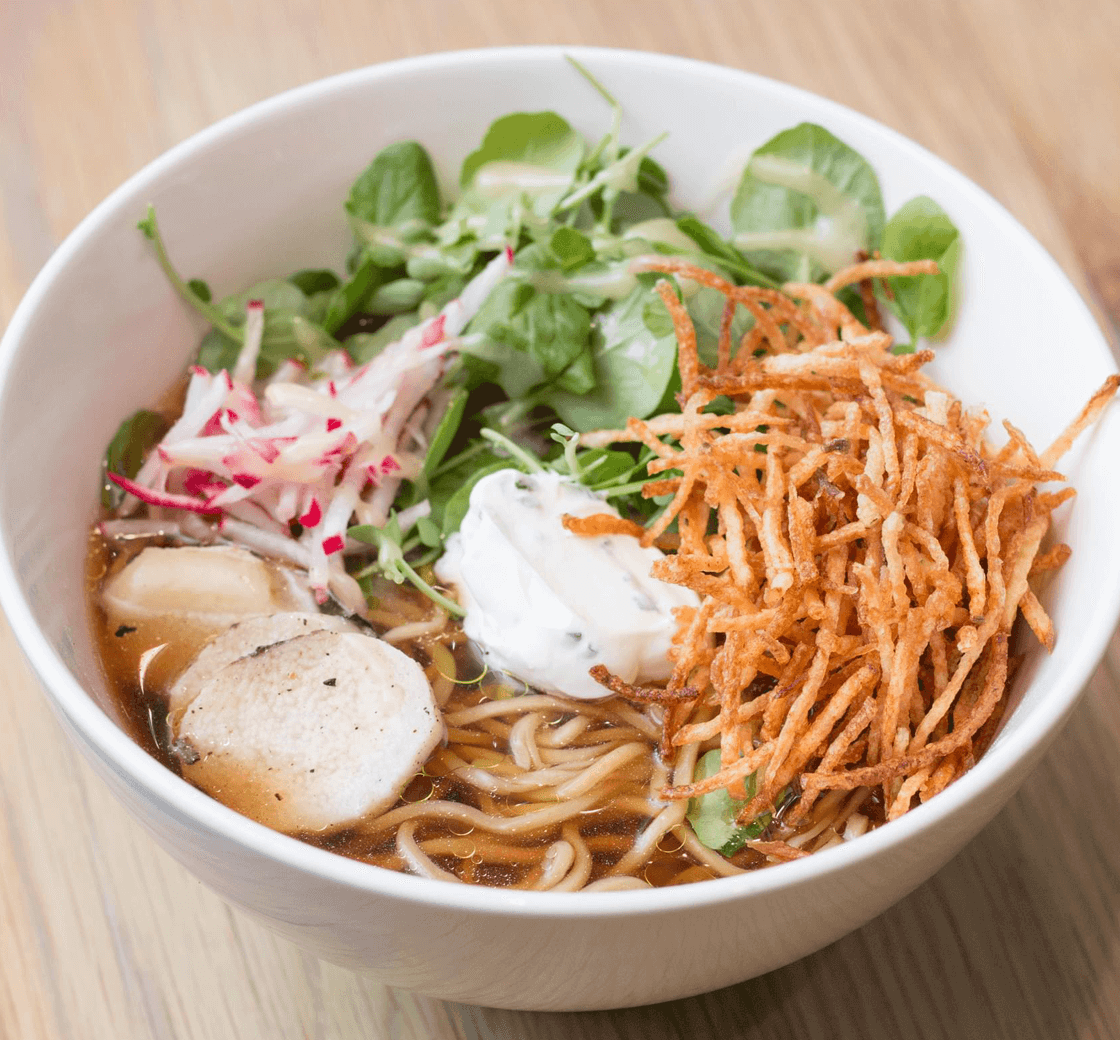
Japanese cuisine is a sophisticated affair, where the aesthetics of the final dish are as important as its taste. Sushi, tempura and shabu-shabu are among its most common exports, but only offer a small glimpse at the richness and variety of dishes found throughout the country. This class will offer you an overview of the foods of Japan, along with a discussion of ingredients and equipment. You will make dashi broth and miso soup; beef negimaki; pork katsudon with rice; and shrimp and vegetable tempura.

You will work in teams to execute the class menu. At the end of class, participants gather to enjoy the food they have prepared. Wine is served with meals in most classes. All class menus are subject to change. While a snack platter is offered in both morning and evening classes, you may want to consider a light snack before joining us for class. Students are encouraged to bring a light lunch or dinner to all pastry classes.

You will work in teams to execute the class menu. At the end of class, participants gather to enjoy the food they have prepared. Wine is served with meals in most classes. All class menus are subject to change. While a snack platter is offered in both morning and evening classes, you may want to consider a light snack before joining us for class. Students are encouraged to bring a light lunch or dinner to all pastry classes.
These dishes capture the flavors and techniques of so many exciting, flavor-forward global cuisines. Spanning the gamut from Mexico to the Middle East, these small but satisfying plates are perfect for parties --- or collect them all to make a masterful (and entirely vegan) meal. We'll create and then feast on: Egyptian baba ghanoush and hummus; Argentinian hearts of palm, tomato and avocado salad; Italian roasted cauliflower with capers; and Balinese chili-grilled tempeh skewers.
Hearty hardly begins to describe the extravagant steak feast you'll be making in this class. Not only will you learn how to make the perfect filet mignon, skirt steak and more, but you'll also become versed in the art of rich sauces, like cognac cream, béarnaise and chimichurri. Your saucy menu includes: filet mignon au poivre with cognac cream sauce; onglet béarnaise (hanger steak with tarragon sauce) and skirt steak with Rojo chimichurri.
For a flash course on all the basics you need to make a varied and impressive meal, look no further. With a professional chef, you'll gain the skills vital for moving through any simple menu with ease. You'll practice knife skills, roasting vegetables, cooking proteins with a pan sauce and a vinaigrette. Then you'll use what you learned as you make a menu of: popovers; sautéed chicken with classic pan sauce; roasted root vegetable salad with fresh herb dressing and garlic mashed potatoes.
Learn the basic techniques of pastry and baking in this 12-session class. The course familiarizes students with the recipes and concepts used by professional bakers and pastry chefs, which form the basis of every competent baker's repertoire. The program investigates a broad range of pastries - both classic and modern - to provide a full understanding of all baking categories.
Ranked as America’s Best Culinary School (USAToday 2019), our roster of Chef-Instructors have run top kitchens around the globe.
| (Separate multiple addresses with commas like: john@aol.com, jane@aol.com) | |